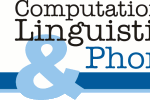|
Cognitive Models of Language Acquisition
Readings Note: Some of the papers are downloadable only from the univ. server. Word learning - Computational Siskind, J.M. (1994). Lexical acquisition in the presence of noise and homonymy. Proceedings of the Twelfth National Conference on Artificial Intelligence (AAAI), 760-766. Siskind, J.M. (1996). A computational study of cross-situational techniques for learning word-to-meaning mappings. Cognition, 61, 39-91. Regier, T. (2005). The emergence of words: Attentional learning in form and meaning. Cognitive Science 29, 819-865. Word learning - Experimental Smith, L., & Yu, C. (2008). Infants rapidly learn word-referent mappings via cross-situational statistics. Cognition, 106, 1558-1568. Swingley, D., & Aslin, R.N. (2007). Lexical competition in young children's word learning. Cognitive Psychology, 54, 99-132. Syntax - Computational Elman, J. (1990). Finding structure in time. Cognitive Science, 14, 179-211. Clark, A. (2000). Inducing syntactic categories by context distribution clustering. In Proc. of Conference on Computational Natural Language Learning, 91-94, Lisbon, Portugal. Syntax- Experimental Trueswell, J.C., Sekerina, I., Hill, N.M., & Logrip, M.L. (1999). The kindergarten-path effect: Studying on-line sentence processing in young children. Cognition, 73, 89-134. Kidd, E., Brandt, S., Lieven, E., & Tomasello, M. (2007). Object relatives made easy: A cross-linguistic comparison of the constraints influencing young children's processing of relative clauses. Language and Cognitive Processes, 22, 860-897. Oberecker, R., Friederich, M., & Friederici, A.D. (2005). Neural correlates of syntactic processing in two-year-olds. Journal of Cognitive Neuroscience, 17, 1667-1678. Akhtar, N. (1999). Acquiring basic word order: evidence for data-driven learning of syntactic structure. Journal of Child Language, 26, 339-356. Dittmar, M., Abbot-Smith, K., Lieven, E., & Tomasello, M. (2008). German children's comprehension of word order and case marking in causative sentences. Child Development, 79, 1152-1167. Semantics and argument structure - Computational Niyogi, S. (2002). Bayesian learning at the syntax-semantics interface. In Proceedings of the 24th Annual Conference of the Cognitive Science Society, 697702. Alishahi, A., & Stevenson, S. (2005). A probabilistic model of early argument structure acquisition. In Proceedings of the 27th Annual Conference of the Cognitive Science Society, 97-102, Stresa, Italy. Alishahi, A., & Stevenson, S. (2007). A computational usage-based model for learning general properties of semantic roles. In Proceedings of the 2nd European Cognitive Science Conference, Delphi, Greece. Semantics and argument structure - Experimental Goldberg, A.E., Casenhiser, D., & White, T.R. (2007). Constructions as categories of language. New Ideas in Psychology 25, 70-86. Goldberg, A.E. (2009). Verbs, constructions and semantic frames. M. Rappaport Hovav, E. Doron and I. Sichel (eds.).Syntax, Lexical Semantics and Event Structure. Oxford University Press. Pyykkönen, P., Matthews, D., & Järvikivi, J. (in press). Three-year-olds are sensitive to semantic prominence during online language comprehension: A visual world study of pronoun resolution. Language and Cognitive Processes. |


|
overview calendar readings |